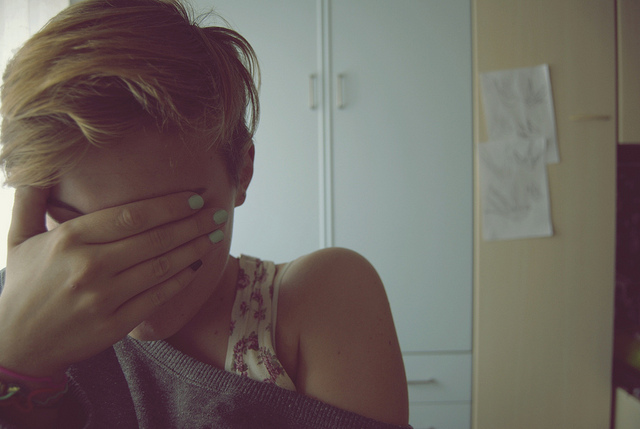Anxiety is defined as distress or uneasiness of mind caused by fear of danger or misfortune.
But my experience of anxiety is a tight knot in my solar plexus, that won’t go away, telling me everything is not okay, even when everything is.
Even when my children are safely asleep in their beds and there’s no one I know to be mad at me and there’s nothing pressing I’ve forgotten to do, that knot telling me that everything is not okay is still there.
Because anxiety has become habitual for me. It is a normal all- the- time sensation I feel even when there’s no danger or misfortune in sight.
How true is this for so many of us?
We have become so accustomed to being worried, so scared things won’t work out, so pushed by the limitlessness of modern society to always be at some type of transformational edge, that even when there’s no stress or fear in sight, still we feel anxiety.
And then how about when there’s a real reason to be anxious?
Maybe we’re going to be fired from our job? Maybe there’s a break-up in our life that looms in front of us? Child custody? Disease? Death.
This is the heart of life. There are always situations that make us uncomfortable. This is what is impossible to control. The myriad of external circumstances we wouldn’t ever choose but could possibly come into our life.
But our internal response to these circumstances? Now this is something we can actually work on. This is where we can actually increase our quality of life by gaining skills to work with our internal response.
So, here are five ways each of us can work internally with our everyday anxiety.
1. Confront it
I mean if there’s something that you’re scared to deal with or if there’s someone you need to say something to then, just do it. Why leave ourselves dangling in the no-man’s land of worrying and being anxious of what might happen?
This is a type of cruelty to ourselves that’s unnecessary.
For instance, the other day I was having a little bundle of anxiety that kept nagging at me because I thought I might be doing something offensive to someone who was being a big help to me. So, what did I do? I called and checked and she said there was no problem between us, so my anxiety dispersed. This is one way we can be compassionate to ourselves, by confronting the issues that are causing us anxiety.
2. Locate it
Where in the body do we feel the anxiety? Is it still? Does it move? Does it have a color? A temperature? One of the best ways to get to know ourselves is through self-awareness of the body. We can make this part of our meditation practice. The process is to check in on how we feel, then find where in the body this emotion lives, and then bring all of our attention to that spot in the body.
This is what healing looks like—locating our pain and sending it love.
3. Love it
Anxiety is so innocent. It enters our psyches because it wants to protect us. It’s intentions are pure, to keep us safe. And for that we can send anxiety love and thanks. Just as if someone was offering us a hot cup of tea when we’re sick but we aren’t thirsty. We can say thank you for the offer of love but it isn’t necessary. This is the loving-attitude we can bring to anxiety: thanks for trying to be there for me but your assistance here isn’t necessary.
4. Don’t Cling To It
Anxiety, like every emotional state, is impermanent. We know it’s going to come and we know it’s going to go. However, the fear is it won’t go. The fear is that anxiety will stay forever and ever and we will never feel whole again.
This fear response in the face of anxiety is a type of clinging.
Instead of clinging to the anxiety we can choose to just notice that there’s anxiety in us. We can give the anxiety a little mental tap of recognition and then move our attention away from the anxiety. We can move our attention to what we’re seeing or what we’re hearing or to our breath.
5. Learn From It
It’s very possible that anxiety is trying to tell us something important. It could be trying to tell us about an external situation that doesn’t feel right or safe or it could be trying to tell us about an internal situation that requires some healing.
We can choose to ask ourselves why is this anxiety here right now? What do I need to learn from it?
If anxiety is an experience that’s being experienced in your life right now I send my love and compassion because anxiety is really an uncomfortable sensation and it often sticks around longer then it’s welcome.
But anxiety does not have to control our lives. Through our own self-awareness and internal investigations we can find ways to turn this stomach- tied- up- in- knots experience into a mindfulness practice that grows our compassion and love.
Relephant:
The Fixed Ideas that Shake Us: How to Make Our Minds Whole.
Author: Ruth Lera
Editor: Renée Picard
Photo: a-lish147 at Flickr









Read 2 comments and reply